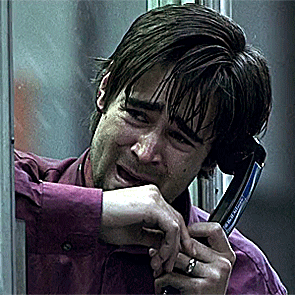Deep Hour put a photo of the ones we used to use. Used to have a choice between 2p or 10p (10p for longer calls) and later it was 5p and 10p, though the 5p's were larter than today and so were the old 10p's as for a number of years uncer decimalisation that came in just before I was born, we used shillings as 5p's and two shilling pieces as 10p's, so we freely mixed shillings and two shillings, some dating right back, with our "Modern" coinage as it saved the country lots of money to do that in the change to a decimal money system.
(When I was young, there were no 20p's and we used pound notes (If we were rich enough to have them) as there were no pound coins, and we used to use tiny half pennies as well.
The red phone boxes much later had their phones changed from the dialy type where one would turn the dial that had places to put ones finger in to turn the appropiate number, to the newer push button type, and with that change came the additional upgrade along with the coin slot so phone cards could be used. I bought a £5 phone card to keep on my bicycle tool kit incase I broke down, and never used it... So when phone boxes became in decline I tried it as one may as well use it (About a decade later), and the thing didn't work! Never ever used a phone card other than that, as we always used coins. Was rare for a household to have a phone in those days as most people walked to use the public phones. (We had our first private line in 1986 when we moved to a rural area and the only reason we had one was due to there being a two mile walk if we didn't). But yes. Usually only the wealthy people or businesses had land lines right up to the 1980's , but if one did need to phone someone, usually a wealthier family would give their number and send one of their kids to pass a message on... We were pretty well.organized in village life back then. There were when I was very young, telegrams instead, so one would go to a post office and pay to have one sent. A post office "Message boy" was employed to take the message at whatever location the postoffice was that recieved the message (Messages were sent down phonelines via standard morse code and one was charged per character (Individual letter), so the message boy would take the message (Either via running or via the postoffice (Of his own) bicycle, to thehouse and people it was intended foe and ask if a reply was needed).
Some rural places in Wales still have phoneboxes with phones as I saw one a coin type few months ago, thouvh it was a push button type.











